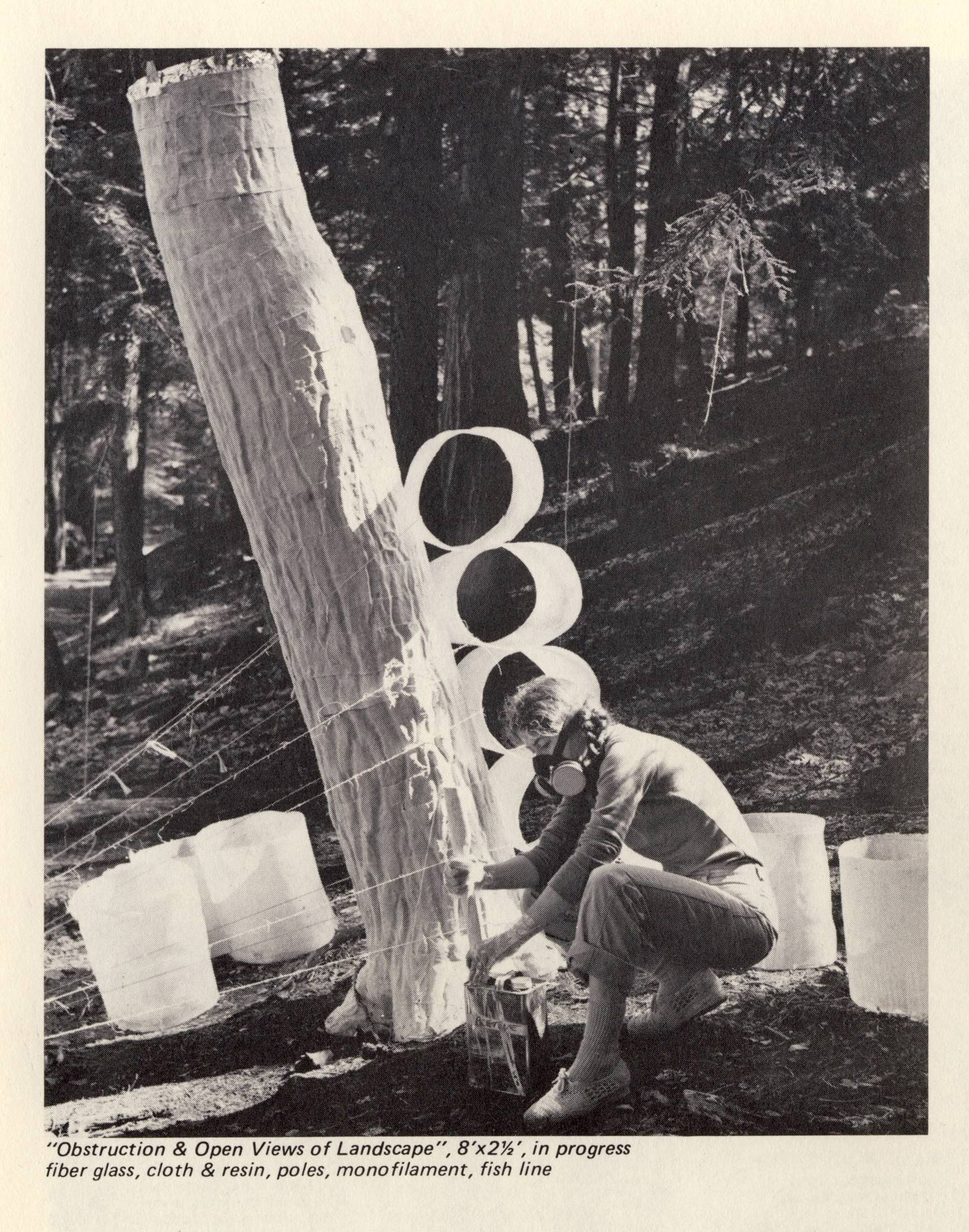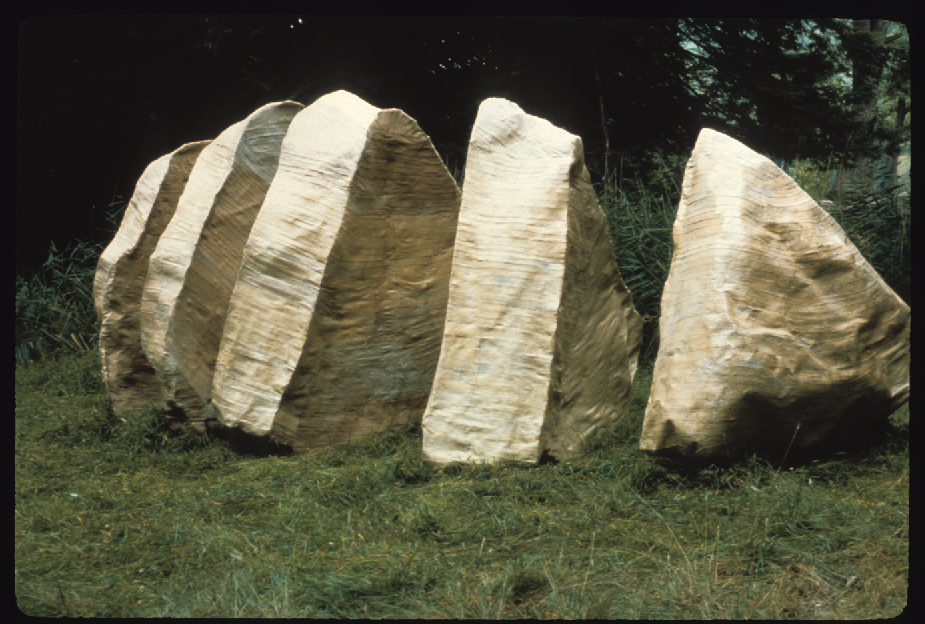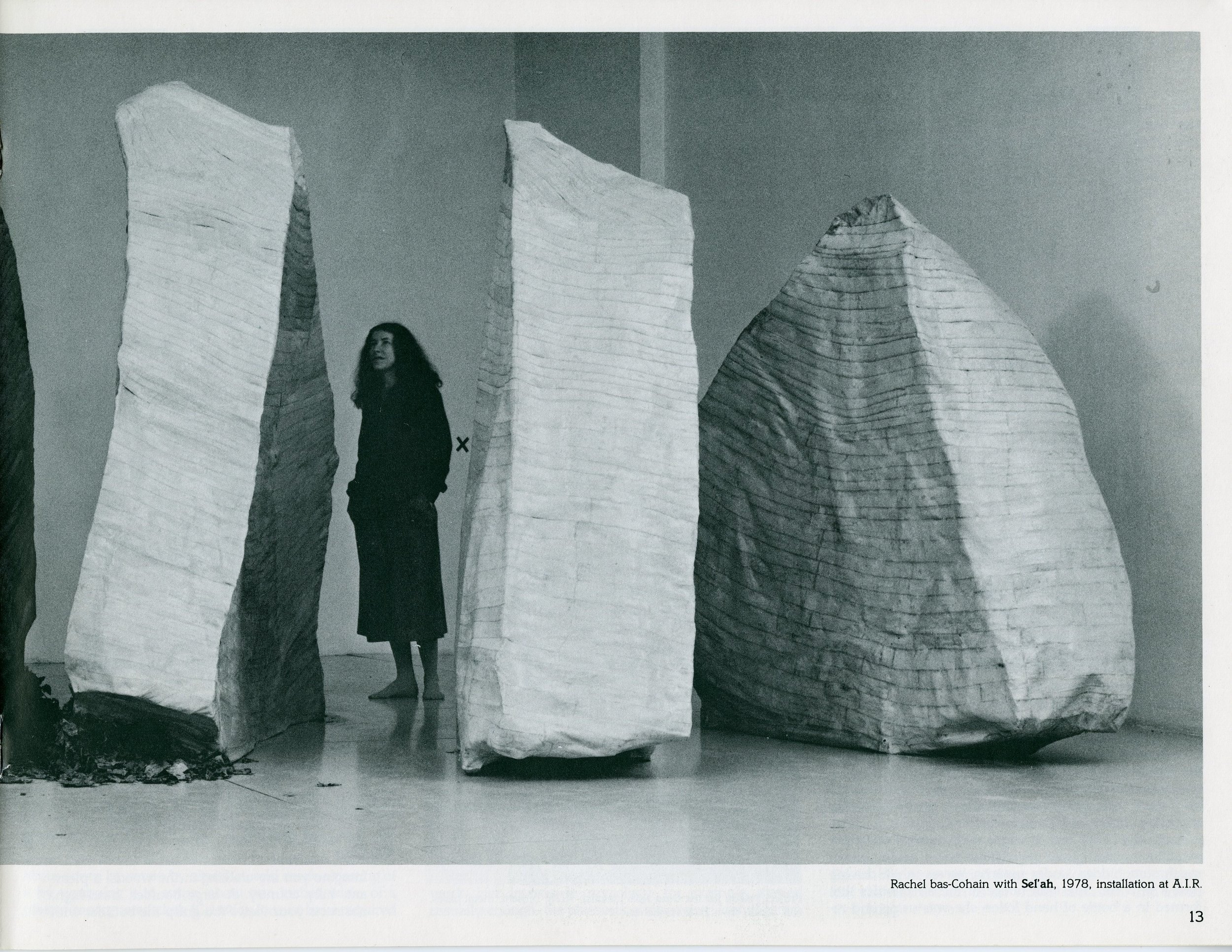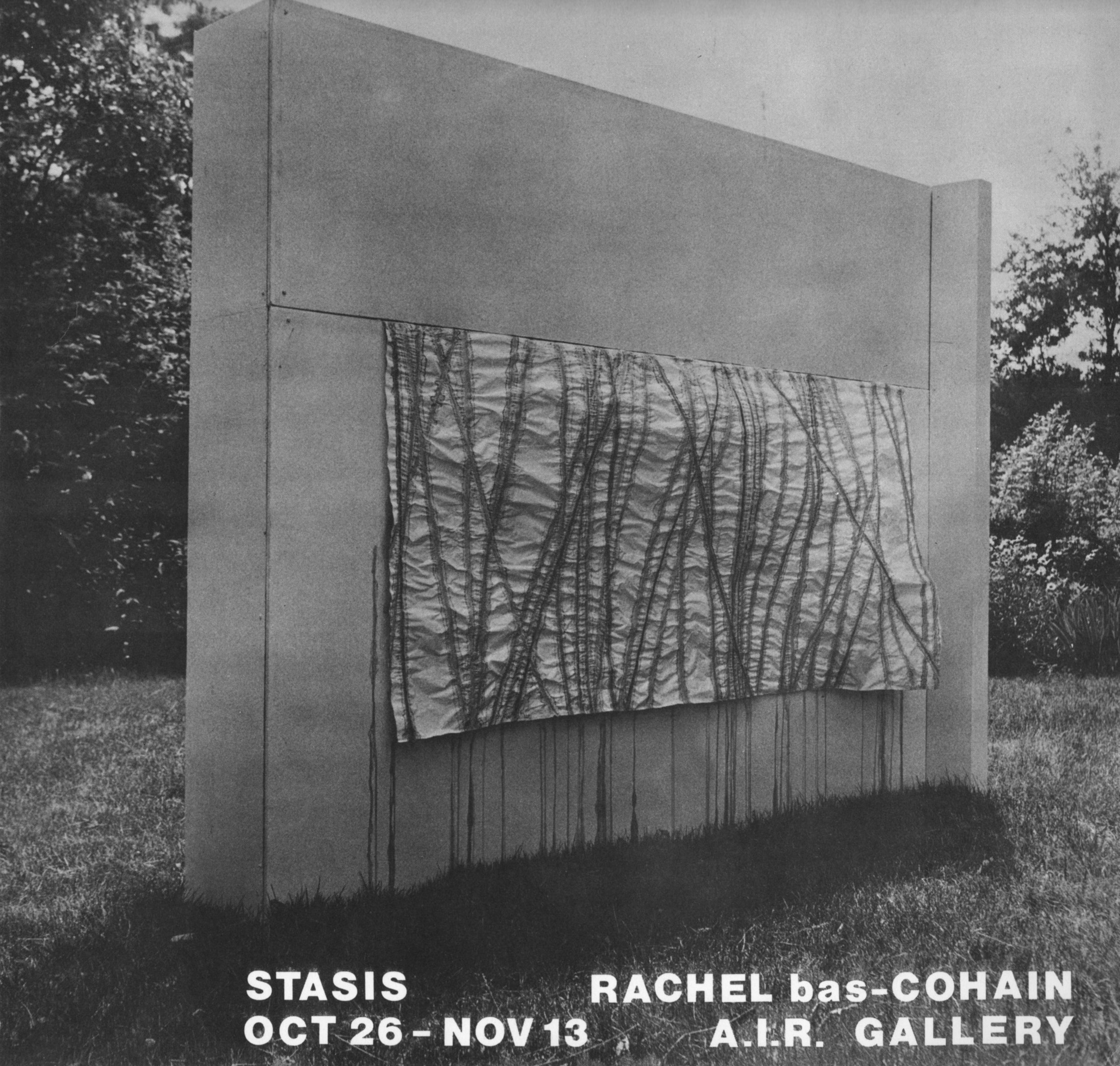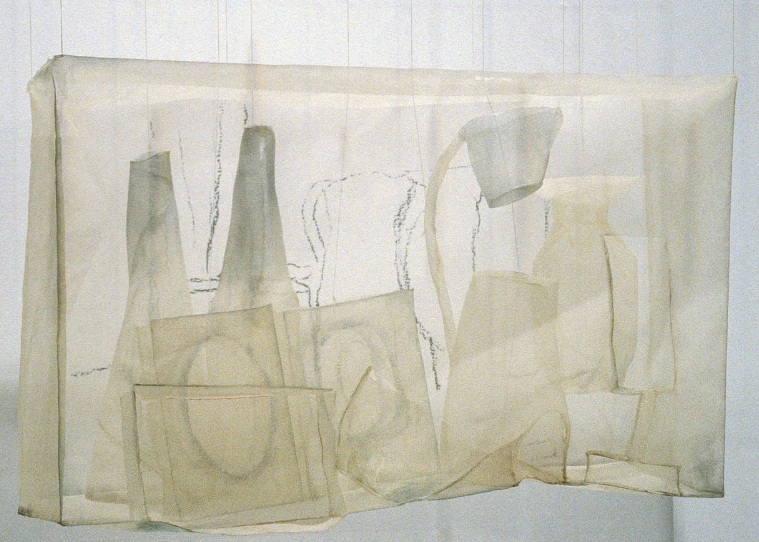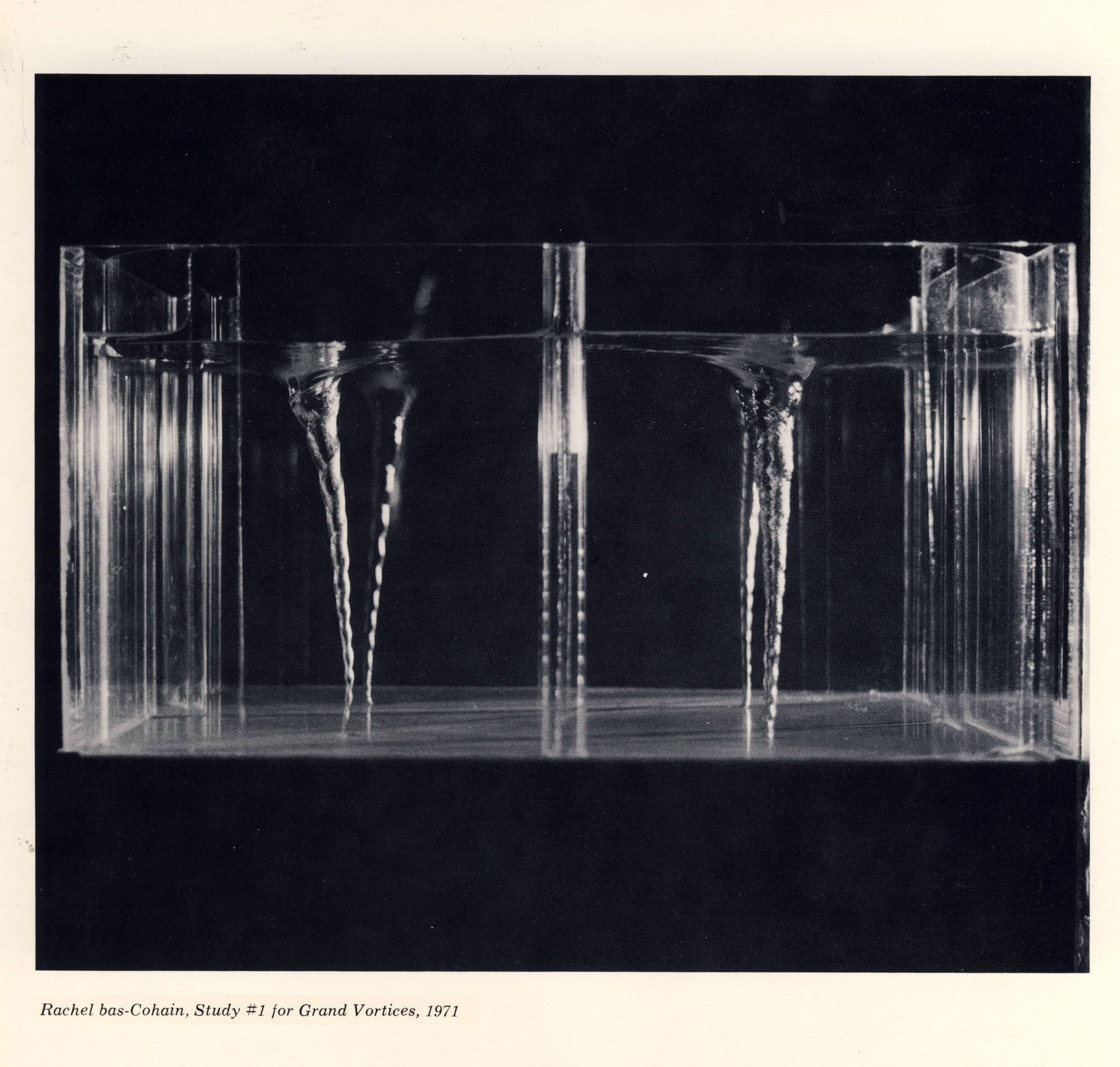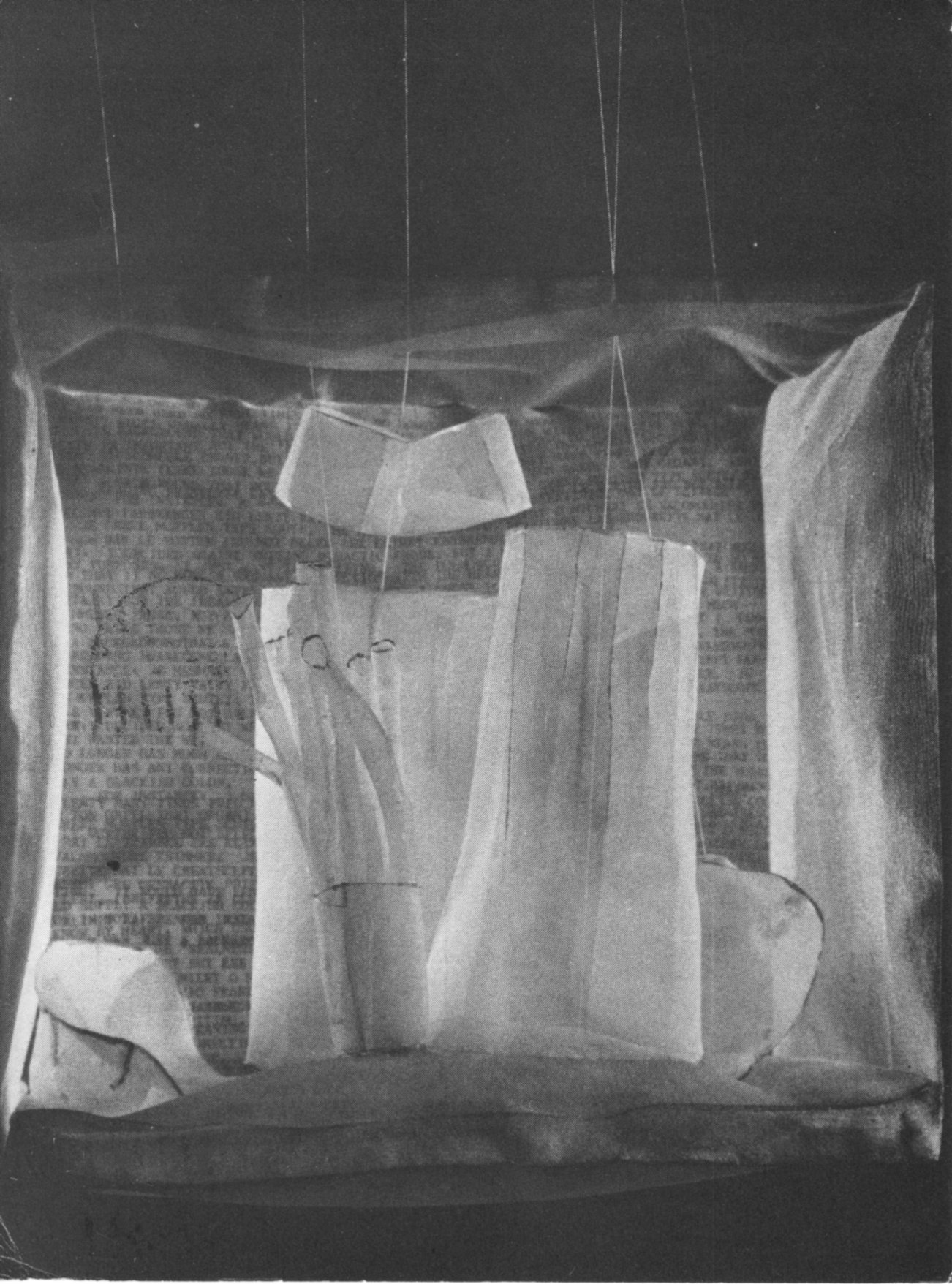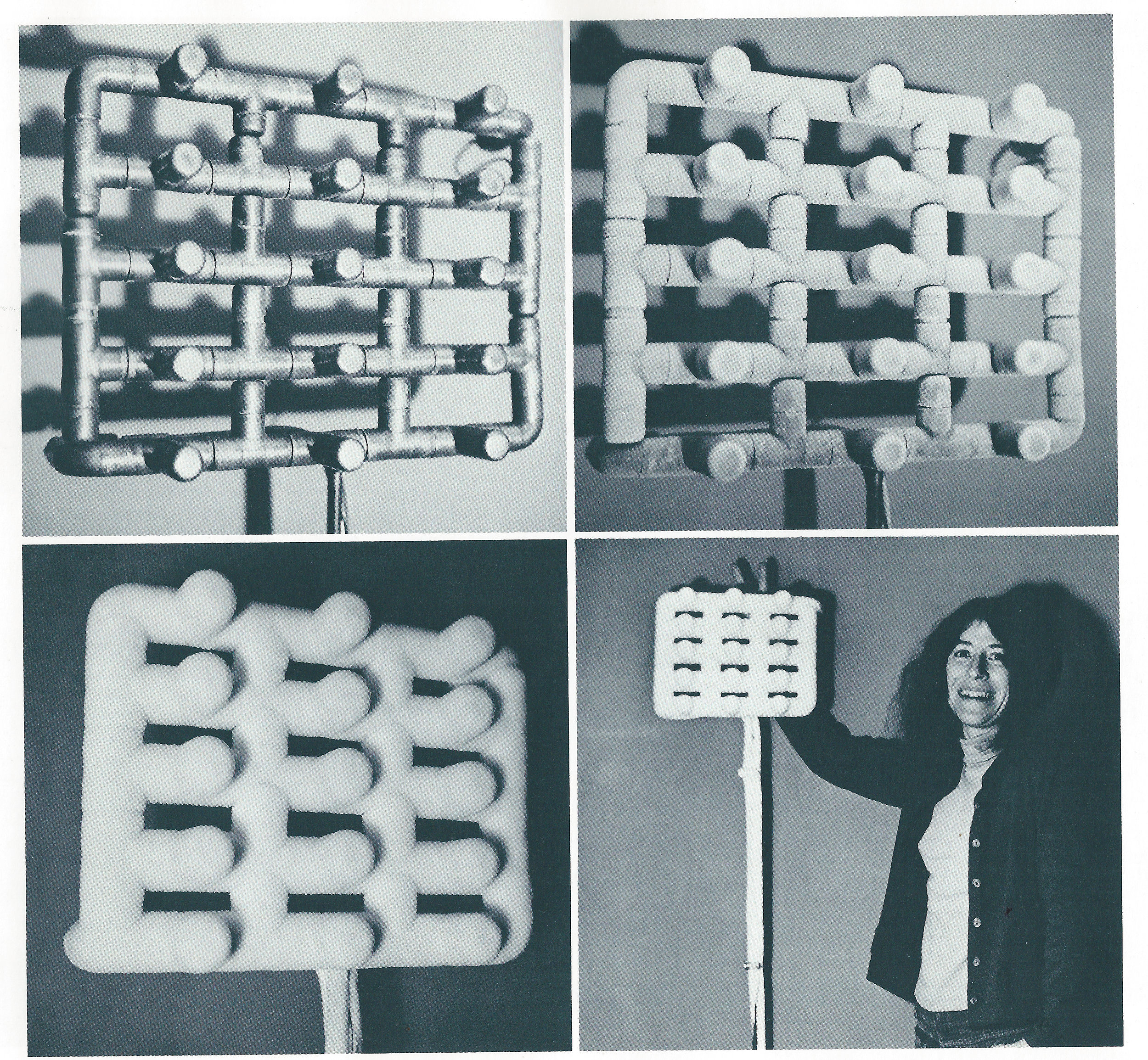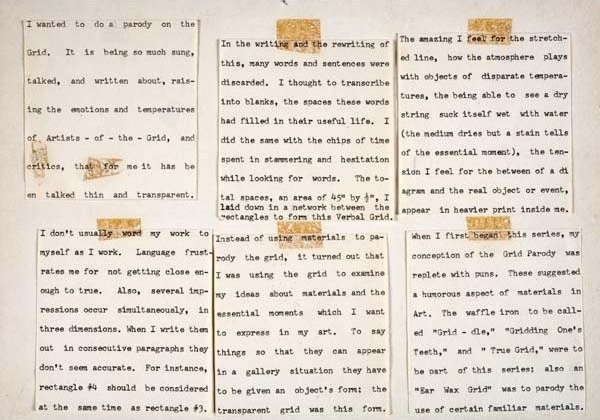“My making of art has to do with compensations we make automatically in the relationship between the artwork and our limitations in physical perception.”
Rachel bas-Cohain was born in 1937 in New York, NY, and worked primarily in Brooklyn throughout her career. Though she was trained in painting and printmaking, bas-Cohain would, over the course of her career, expand her scope of interest to include a variety of disciplines such as music, graphics, kinetics, and other fields of study. Conceptually, she often played with audience perception of visual and physical information. In Frozen Grid, from her series “How I Stopped Worrying and Learned to Love the Grid,” bas-Cohain assembled a kinetic sculpture whose appearance and texture could be altered at will. Through a clever manipulation of a copper wire grid, a copper rod, and a refrigeration unit, the wiring would appear either cold and metallic, or soft and fuzzy, depending on how much moisture had crystallized on the wiring after the refrigeration unit was turned on.
Bas-Cohain also took an interest in Land Art early in its development. The genre provided an opportunity for the artist to continue her experiments with visual impressions of physical objects; in 1982, she designed a series of large outdoor “flat” sculptures” that gave the appearance of either geometric abstractions or dimensional building-like structures, depending on where one stood. Such prescient endeavors remain as challenging and exciting today as they were during their conception.
After becoming one of the twenty founding members of A.I.R., as well as a member of Central Hall Gallery, Women in the Arts, and the Ad Hoc Women Artists’ Committee, bas-Cohain gained both a platform for her work and the exposure needed to further pursue her artistic ambitions. It was during this time that she produced Frozen Grid, in addition to other, explicitly feminist work. Rachel bas-Cohain would continue to make political, reflective, and challenging work up until the last year of her life.
Included in bas-Cohain’s March 1982 exhibition at A.I.R.—the final exhibition of her work before her death—were photographs of flat sculptural string drawings constructed on a landscape, and a series in which silk organza forms were suspended in clear lucite boxes. Bas-Cohain configured the objects in a semi-circle around the gallery space, set them against a gray background, and positioned blue spotlights to shine on and through the delicate fabric as if setting the stage for a ghoulish, foreboding performance. Bas-Cohain assembled these silk organza sculptures during her illness, sometimes working on them in her hospital bed.
In many ways, the silk organza box series functions as a way to help the artist communicate her own experience of loss to her audience. Described by curator Jean Feinberg as nontraditional signifiers of memento mori, these sculptures carry with them the weight of our mortality, reminding us of our own ephemerality. Through a tactile, three-dimensional medium, bas-Cohain reveals to us the simultaneous fragility and malleability of the human body, and its ability to sustain a dialogue in moments where words seem insufficient.
Rachel bas-Cohain received her arts education at the Art Students League of New York, The New School for Social Research, the Brooklyn Museum School, and Brooklyn College. Additionally, she was a graduate of the Brooklyn School of Music and was awarded a two year grant from the Radcliffe Institute in Cambridge in 1968 to continue her studies.
member 1972-82 | 1937-82 | New York, NY
+ Select Exhibitions
Four Weeks and Forty-Five Years, 2017
Silk Organza Sculptures, 1981-82, 1991
Selected Works, 1985
+ Selected Press
Artforum Review, 1985
Artforum Review, 1973
+ Publications
+ Collections
Indianapolis Museum of Art
Davis Museum at Wellesley College
Whitney Museum of American Art
